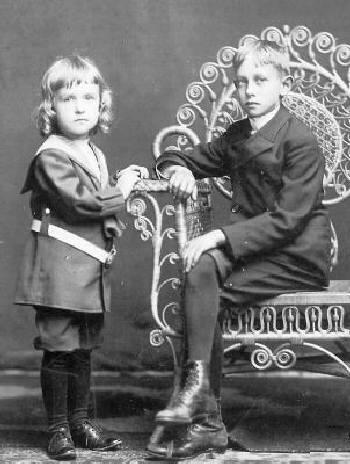
Figure 1.--This portrait of two Chicago brothers is undated, but looks to us as if it was taken in the 1900s. At the time, tunic suits wee popular for younger boys. |

|
Ringlet curls for boys were not common in the 20th century, but we do see them at the very beginning of the century. We contunue to see American boys wearing ringlet curls after the turn-of-the 20th century, especially the early 1900s. Some mothers kept to the traditional practices well into the 20th century. Usually ringlet curls in this era were for younger boys, but some mothers might wait until a boy was 10 or even 11 before allowing him to have his long curls cutting. The fashion, at leasy for boys, declined in popularity substantially during the 1900s and was much less common by the end of the decade. World War I as with clothing and other soicialconventins was a major turning point. After World War I in the 1920s it was no longer a major style, although we do continue to see a few boys with ringlets. Some very young boys might wear natural curls until their first hair cuts, but this was usually onlt to ear length. Ringlets becae a girls style and became extrodinarily popular for girls when Shirly Temple began her famed movie career with her trade mark bangs. After this long ringlets virtually disappeared for boys. Usually ringlet curls in the early 20th century were for younger boys, but some mothers might wait until a boy was 10 or even 11 before allowing him to have his long curls cutting. Even after graduating to kilts or boyish suits such as sailor suits and other outfits such as little Lord Fauntleroy suits, a boy might be kept in long-flowing curls. Dresses for boys passed from fashion by the 1920s. Little boys instead wore rompers, smocks, or short pants. Boys in these new styles might have longish hair, but the uncommonly wore ringlets. Most boys in the early 20th Century wanted short hair. A boy with long hair, especially a school-age boy was apt to be teased if he still had long hair, especially long ringlets. As more and more boys attended public school mothers increasingly found they had less leeway on how they dressed their sons and styled their hair and had to increasingly conform to emerging national consensses on such matters.
Ringlet curls for boys were not common in the 20th century, but we do see them at the very beginning of the century. We contunue to see American boys wearing ringlet curls after the turn-of-the 20th century, especially the early 1900s. Some mothers kept to the traditional practices well into the 20th century. Usually ringlet curls in this era were for younger boys, but some mothers might wait until a boy was 10 or even 11 before allowing him to have his long curls cutting. The fashion, at leasy for boys, declined in popularity substantially during the 1900s and was much less common by the end of the decade.
The fashion of long hair for boys, which had existed for decades, suddenly became less common in the 1910s. We see far fewer portraits with ringlet cirls in the 1910s. The fashion rapidly disappeared in the 1910s, especially after World War I. World War I as with clothing and other soicialconventins was a major turning point. After World War I in the 1920s it was no longer a major style, although we do continue to see a few boys with ringlets. Some very young boys might wear natural curls until their first hair cuts, but this was usually onlt to ear length. Ringlets becae a girls style and became extrodinarily popular for girls when Shirly Temple began her famed movie career with her trade mark bangs. After this long ringlets virtually disappeared for boys. Even very young boys by the 1930s no longer had their hair doe in ringlet curls, although often small children did have natural curls.
Usually ringlet curls in the early 20th century were for younger boys, but some mothers might wait until a boy was 10 or even 11 before allowing him to have his long curls cutting.
Even after graduating to kilts or boyish suits such as sailor suits and other outfits such as little Lord Fauntleroy suits, a boy might be kept in long-flowing curls. Dresses for boys passed from fashion by
the 1920s. Little boys instead wore rompers, smocks, or short pants. Boys in these new styles might have longish hair, but the uncommonly wore ringlets.
Most boys in the early 20th Century wanted short hair. A boy with long hair, especially a school-age boy was apt to be teased if he still had long hair, especially long ringlets. As more and more boys
attended public school mothers increasingly found they had less leeway on how they dressed their sons and styled their hair and had to increasingly conform to emerging national consensses on such matters.
Navigate the Boys' Historical Clothing Ringlet pages:
[Return to Main ringlet chronology page]
[Return to the Main ringlet page]
[Return to the Main ringlet chronology page]
Navigate the Boys' Historical Clothing Web Site:
[Introduction]
[Activities]
[Bibliographies]
[Biographies]
[Chronology]
[Clothing styles]
[Countries]
[Contributions]
[FAQs]
[Glossaries]
[Images]
[Links]
[Registration]
[Boys' Clothing Home]
